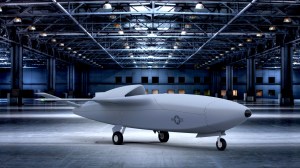The Air Force’s top officer has spent the week reiterating the deleterious impact of sequester cuts on the Air Force’s combat readiness. And at a Senate hearing June 20, the Air Force got at least a small indication that lawmakers agreed.
Appearing before the Senate Appropriations Committee’s Subcommittee on Defense, Air Force Chief of Staff Gen. Mark Welsh pressed the upper chamber to continue funding for the $391 billion F-35 fighter jet program. And the panel agreed, maintaining funding for the project, infamous for its runaway budget and repeated delays.
The House Armed Services Committee has also approved continued funding for the project. The Senate panel’s decision comes three days after Welsh preached the necessity of the project at the Air Force Association’s monthly breakfast.
“When we truncated our F-22 buy, we ended up with a force that can’t provide air superiority in more than one area at a time,” Welsh said. “The F-35 is going to be part of the air superiority equation whether it was intended to be, originally, or not.”
The Air Force’s F-22 “buy” was reduced because of the across-the-board cuts. The Air Force has grounded 33 squadrons, 12 of which were trained for combat and intelligence gathering. Seven additional squadrons were downgraded to basic missions capability only.
“We’ve got folks sitting in fighter squadrons looking out of windows at aircraft that they haven’t touched since the first of April,” Welsh said at the breakfast.
Thursday, Welsh echoed his comments, explaining the F-35 — a fifth-generation fighter plane combining stealth technology with fighter jet nimbleness — is integral to battle readiness in the face of cuts elsewhere.
“The air superiority this nation has enjoyed for 60 years is not an accident, and gaining and maintaining it is not easy,” he told the panel. “It requires trained, proficient and ready airmen and it requires credible, capable and technologically superior aircraft.”
Superior aircraft are also critical to any possible military action in Syria, currently in the middle of a brutal civil war. At the breakfast, Welsh said Syria had more advanced anti-aircraft capability than either Libya when the U.S. intervened in 2011, or during the no-fly era in Iraq from 1991 to 2003.
“We know the Syrians have more updated equipment than they had in Libya or Iraq,” Welsh said. “We also know they actually operate it. They turn it on, they use it, they train with it. … So our assumption is they’re better trained.”
Which is why Welsh argued Thursday for the funding to update the aging Air Force fleet.
“Potential adversaries are acquiring fighters on par with or better than our legacy fourth-generation fleet,” Welsh told the committee. “They’re developing sophisticated, early warning radar systems and employing better surface-to-air missile systems, and this at a time when our fighter fleet numbers about 2,000 aircraft and averages a little over 23 years of age — the smallest and the oldest in the Air Force’s history.”
While the final budget is not yet in place, at least Thursday, it looked as if the Senate and House were agreeing with Welsh.






